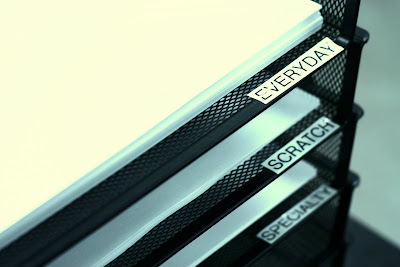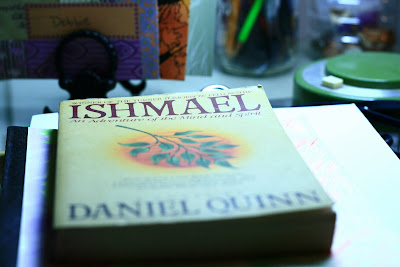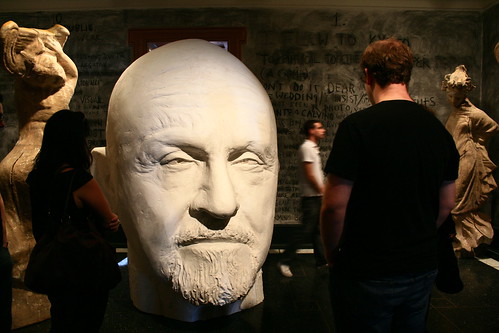
For those of you that haven't heard about this event, Matthew Modine is launching an event called Bicycle for a Day. Bicycle for a Day is for anyone who can get on a bicycle and demonstrate that doing ONE thing will better our environment. Participants can even skateboard or walk, just as long as it doesn't use gasoline!
He is also accepting 30 to 90 second short films that "best express the freedom of bike riding." Select films will be featured on the website, as well as one of the event's stages in NYC. I asked him to answer a few questions about the event for my readers.
Ecopix: What is Bicycle for a Day (BFAD)?
Matthew: Bicycle for a Day is a day to give up gas powered vehicles. There are hundreds of things we can do everyday to reduce carbon emissions. Bicycling is one simple thing each of us can do to improve our personal health and the health of the planet.
Ecopix: How do we participate in BFAD?
Matthew: When you wake up Sept 20th, choose to NOT use gas powered vehicles. Walk, skateboard, bicycle, stay at home. On the bicycle for a day website there is a list of things you can do at home to reduce waste. There are over 300 million Americans. If each of us did a couple of things to save energy everyday, the cumulative effect will be enormous.
Ecopix: Where is it taking place?
Matthew: This year I am focusing on NYC. We are having an event at the South Street Seaport on Manhattan's lower east side. This is the official gathering place for the first annual event.
Ecopix: From where did the inspiration for BFAD originate?
Matthew: I was asked, "if there was one thing I could do to reduce carbon emissions, what would I do." The answer for me was as simple as "ride a bike." The idea grew into a film that was presented at the Economic Forum in Davos, Switzerland. The film was a huge success and the people that gathered for the forum encouraged the development of the concept into reality.
 Ecopix: How has the response to the event been so far?
Ecopix: How has the response to the event been so far?Matthew: Everyone is excited by the idea. They smile at the simplicity of bicycling as a solution to an enormous problem. They feel empowered by the idea of bicycling as a solution and action they can take.
Ecopix: Can you tell us about your short film and the opportunities for other filmmakers to screen their BFAD story on your site?
Matthew: I hope that film makers will make shorts (one or two minute) that tell stories about personal biking experiences. Romantic, crazy, dangerous, adventurous, what ever they like. I'll post some of them on the website and next year they'll get shown at the BFAD events around the world.
Ecopix: What is BFAD's ultimate goal and what are your hopes for the event?
Matthew: I hope it grows into a tool for inventors and creators. A place where dreamers of new ideas can see their ideas shared and shown to demonstrate new ways of solving the current environmental situation. Everyday I meet amazing people with wonderful solutions to the way things are done and how they can be done better. The BFAD website should be a place for those ideas to be seen throughout the world. A loud speaker for those voices of change.
Ecopix: Besides BFAD, what other activities do you participate in to help preserve our environment? (i.e any other organizations or events)
Matthew: I work closely with the two charities BFAD supports. WaterKeeper Alliance (River Keepers) and American Forests' Global ReLeaf project. One protects our rivers, lakes, oceans and seas. The latter protects and replants our forests and brings trees to neighborhoods that don't have them.
Ecopix: What are the aspects of our society that discourage you the most? How do you try to change them?
Matthew: People that point the finger and blame. People that don't believe in possibility. We built a railroad across the United States after the Civil War in less than five years. We went to the moon in less than ten. We are capable of tremendous change when we choose to work together as a nation. When we are decisive. I want to be on the team that wants to solve problems instead of pointing the finger and blaming.
Ecopix: As a successful actor, what have you done to promote your stand on the environment with the productions you work on?
Matthew: I got the film industry, the talent agencies, to print double-sided scripts. I was filming in Morocco and introduced the concept of deposits on bottles and recycling to the Mayor of Ouarzazate. Simple things that anyone could have done. Billions of sheets of paper have been saved and plastic and glass bottles no longer litter the desert at the foot of the amazing Atlas Mountains.
Check out Matthew's own short film for Bicycle for a Day.
















